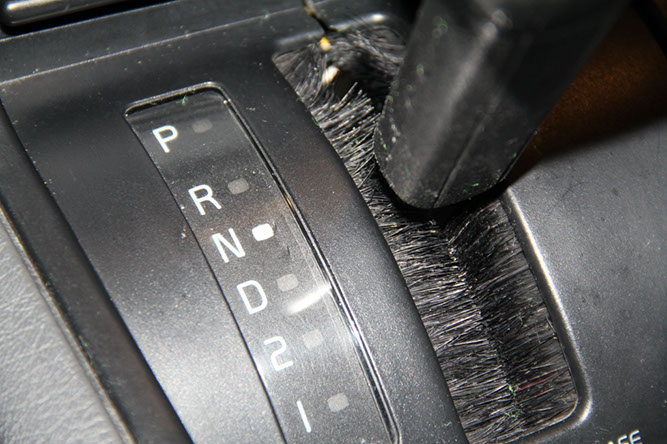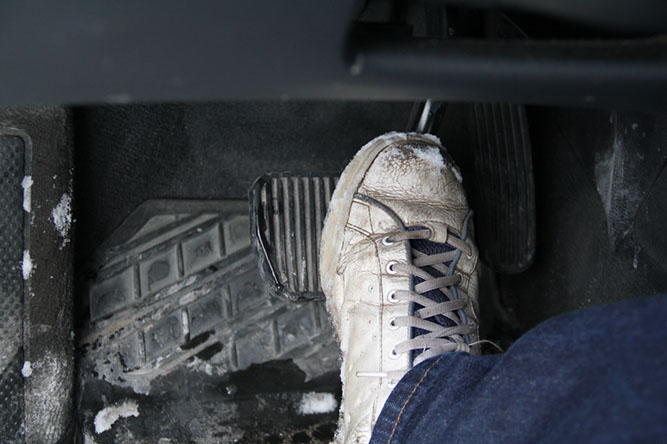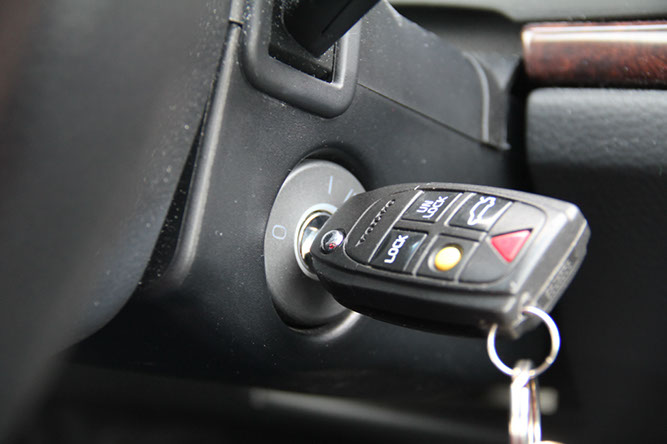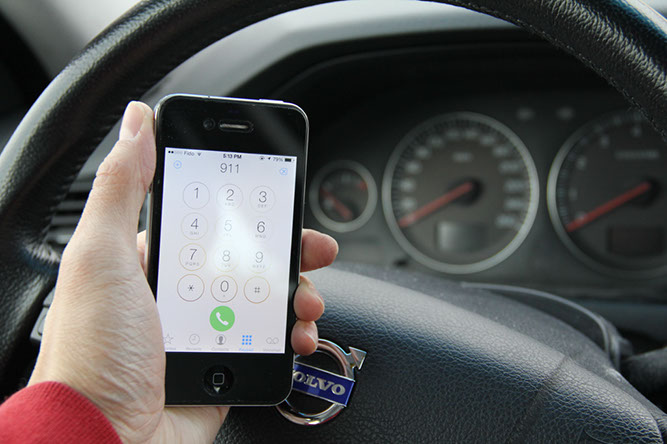When your car just won't start, you're not usually in a dire situation. You can call a tow truck and get yourself a jump. Even better, some good Samaritans will see you with your hood lifted up and offer the use of their car and jumper cables. If it happens that your car dies on you while you're idling at a stoplight, it's also not too big of a deal. You can put on your four way flashers, profusely apologize to the cars behind you, and do your best to restart the car, or again, call a tow truck. In the previous two cases, our car was stationary. So what happens when your car dies on you when the car is moving? Say, on a highway, in the left lane, with commuter traffic all around you. Then things start to become a little more dire. This exact situation happened to me the other day, and I thought I would share some helpful tips in case you ever find yourself in a similar circumstance.
[Disclaimer: The following tips are intended to help you control your car and safely bring it to a stop in case your engine ever shuts down on your while you are moving on a highway or a busy street. The opinions shared below are purely from my own experience. Every reader and driver is responsible for their own actions and safety]
Step 0: What you can expect to happen to your car
First off, here's what won't happen: you car will not suddenly come to a halt as if you slammed on the brakes. What will happen is in fact, is entirely controllable:
a) Your power steering will not be functional, but you will still be able to steer.
You will still be able to steer your car. You may have to put a little more effort into the steering, but as the car is moving, it should not be very difficult to steer the car as you intend.
b) Your brake assist will not be functional, nor will your ABS, but your brakes will still slow you down.
In general, brake assist requires vacuum from the engine to operate. If the engine dies, you have no more vacuum, hence no more brake assist. Your brakes will feel harder, and to some, it may feel like the brakes have stopped working. However, you can trust that your brakes will still be functional, even though it will require more effort to slow your car down. If your car isn't slowing down, just step on the pedal harder.
c) All your electronics and lights will still be functional
Luckily, engineers have thought to keep your electronics separate from the engine in the case of an emergency. Your headlights will still be on, your brakes lights will still function, as will your wipers. Fortunately, your turn signals will also work and if you so desire, your radio will still work too. However, in the name of safety you can probably wait a little bit more before switching your tunes.
Step 1: Don't panic. Keep your car in its lane and on the road.
You haven't crashed. You still have 100% control of where you want your car to go. The only thing that can go wrong is if you make a mistake. You need to be able to think things through to get yourself out of a sticky situation. Stay in your lane and don't make any sudden lane changes.
Step 2: Shift into neutral
By shifting into neutral, you will keep the momentum of your car up, and allow your speed to not slow down nearly as much as if your car were in gear. This will give you more time to maneuver your car. If your car is still in gear, your engine will naturally want to slow your car down through engine braking. In a manual car, shifting to neutral is as simple as stepping down on the clutch. In an automatic, you just need to push the gear lever up one notch into neutral. You don't need to press the button on the shift knob. For those of you with cars from the space age with buttons or knobs, just make sure to press the right button.
Step 3: Turn on your 4-way flashers
Turn on your four-way flashers. You'll still have brakes, steering, and electricity. Your car will be slowing down in middle of traffic with no brakes applied, so you need to communicate to other drivers on the road that there is a problem, and they need to steer around you.
Step 4: Navigate safely off the road.
Change lanes when it is safe to do so. Check your mirrors, check your blind spots, and slowly make your way to the side of the road. Try not to make any sudden lane change maneuvers, making sure that other cars know what you're doing.
Step 5: Bring your car to a stop
Once your car is fully on the side of the road, slowly press on the brakes. Do not slam on the brakes, especially in the winter when there is a lot of ice on the shoulder. Doing so may cause a loss of control. Remember, your ABS won't work so the potential for you locking up your wheels is very high. Once your car is stopped, put your car into park, and leave your four way flashers on.
Step 6: Try to restart your car
Keeping your four way flashers on, you might be lucky and your car will restart, If it does, let it idle a bit and give it some gas while in neutral to see if it will stay running. If the engine feels healthy again and you feel confident it will stay running long enough, slowly merge back into the highway and get your car off the road into a safer location as soon as you can. If you aren't sure about your car, it is safer to stay off the road. It's more than likely that your engine will stall again.
Step 7 (If Step 6 doesn't work): Call for help. Get out of your car if it is safe to do so or stay bucked-up inside if you have no choice.
Being on the side of the road is never a safe situation. First off, call the police, and inform them your of your situation. If you're lucky, a patrol car will be nearby and they can pull up behind you to further help guide traffic safely around you while you figure out what to do. After you have called the police, call a tow truck and take your car to your favourite shop, or even home if you so desire. If there is a guardrail, get out of your car and stand on the other side of it. On the other hand, if there is nowhere to go, stay inside your car and stay buckled up. Keep your four-way flashers on the whole time.
Tips for advanced drivers: restart your car while on the move.
This is only to be performed if you are familiar with your car and have full confidence in your driving and multitasking abilities.
If the situation calls for it, say you're on an uphill slope and packed traffic all around you, you can try to restart your car while the car is still moving. It's a simple procedure, but make sure to do them in the right order, and do it right. Note: This procedure will momentarily turn off your lights, so it is not recommended for when driving at night on unlit roads.
a) Shift your car into neutral. Don't touch the brakes
With a manual transmission car, keep your car in gear, but step on the clutch. For automatics, just shift your car into neutral.
b) Turn your key back one notch.
Don't turn it back farther than one notch, and only one notch. Moving it back more than one notch may cause your steering lock to activate, disabling your steering ability and making your situation a lot worse. Keep in mind, your lights will turn off. This is not recommended to be performed when driving on unlit roads at night.
c) Restart your car.
If your car doesn't start up again immediately, abandon this task and just pull to the side of the road. You only have one shot before your car becomes too slow and a greater hazard to cars around you. If your car starts go to step d).
d) Shift back into gear, or put your transmission back into drive.
In a manual transmission, simply let out the clutch as if you were shifting normally. For automatics, shift your car back into drive. You will need to depress your shift button to shift from neutral to drive.
e) Drive away and pull off the road when it is safe to do so.
Hopefully, you will never find yourself in this situation, but if you do, at least you can be a little more prepared to handle your car under unexpected circumstances.
About the Author: Tim Wong

Tim is a Canadian from Windsor, which means he has plans to use his Volvo as an emergency space heater. He is a mechanical engineer by day and backyard mechanic by night. His mantra in life is to never break another bolt.


















